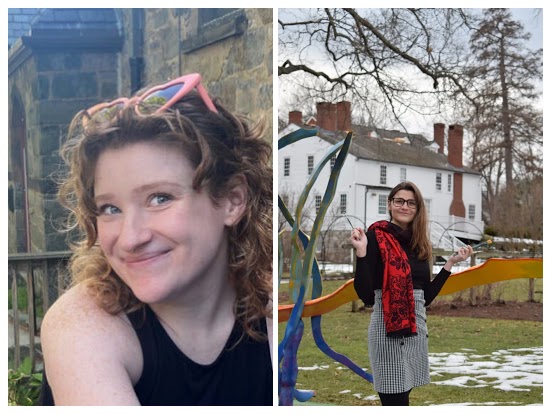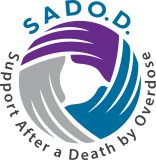
Art Educators Teach Students to Express Emotions
By Luke Schmaltz, VOICES Newsletter Editor
On Oct. 29, the New Art Center in Newton hosted a Dia de los Muertos (DDLM) workshop for kids. This offering was part of the Art as Therapy program for middle school kids. The day featured art making, music, dancing, food, and a large Dio de los Muertos altar dedicated to those who have recently died.
Working with Kids
Sarah Moriarity is the Education Coordinator for the New Art Center. “We are a nonprofit organization,” Moriarity explains. “We present opportunities for everyone at all levels of literacy to make, think about, and talk about art. We offer art classes for kids, teens, adults and everyone in between. We are also involved in community outreach through our Cultural Access Project. Through this we offer community cultural days, which are free events that allow various organizations to highlight their traditions and to promote awareness about other cultures.”
“The concept of DDLM is, while they are not here physically, our loved ones are still with us,” Moriarity explains. “It is an opportunity to reflect and bring them back to the forefront and celebrate the time we had together.”
“While planning the event with our guest artist, Christobal Sanchez, we decided that this was a really good opportunity for people dealing with grief or who are in mourning to express it in an artistic way. I co-lead the Art as Therapy sessions, and it is so wonderful to work with those students, because being in middle school is not always fun. It can be really weird and uncomfortable. It can be hard to find the words to express that, and we have found that these students really benefit from learning about different ways of expressing their emotions through visual art. That can be sculpting with clay, painting, sketching, or drawing.”
Close to Home
Moriarty works with students in Newton who are grieving a loved one’s death from overdose. “We offer them an opportunity to connect with each other and build relationships. Our background in art therapy for kids translated well to the DDLM workshop.”
Moriarity attests to the power of art when dealing with death, citing how her best friend recently suffered the loss of a cousin to an opioid overdose. “She made art about it,” Moriarity says. “She was really dealing with a lot, they were very close, and she became really introverted. Through the process of making that art, it was astonishing to see how she was able to come to terms with it all. Her project was for a college art class, so it was something she was presenting. And to put something so personal and so raw on display takes a lot of bravery. The art was a 3D-printed sculpture of the hands of Adam and God. One of the hands was a skeleton, holding a bag of drugs, and passing it to the human hand.”
Kindred Spirits Collaborate
Recently, Moriarity was approached by a Massachusetts-based art therapist, Courtney Aldrich, who expressed interest in the Cultural Access Project. Aldrich participated in an Oct. 22 event similar to the DDLM workshop, using her experience working with kids to support conversations around grief.
In addition to being an expressive art therapist, Aldrich is a clinical social worker and the founder of Fannthera, an alternative healthcare practice.
Fannthera is dedicated to increasing access to mental health education and community support through online group learning. This family-run organization recognizes there are gaps in the mental healthcare system and works to fill them through affordable, empowering, non-traditional alternatives.
Fannthera focuses on three groups: adults, family, and youth. For the latter, they offer a curriculum focused on strategies for helping kids to manage and understand their behaviors, thoughts, and feelings.
Art and Loss
“Loss is huge,” Aldrich begins, “And often the biggest loss of all – the life of someone you love – occurs under tragic, unexpected, unpredictable circumstances. I have always used art to help young people and families to express emotions, to build positive experiences, and to express without being rushed, without expectations, and without playing some sort of a role.”
“Emotions drive art, and in that regard, everyone is an artist. That’s why I love doing this work because you’re tapping into how individual people express themselves. You are using materials and tools to not only express your emotions, but to be with your emotions. Art is a way to help people connect with themselves more deeply and experience emotions in a way that feels productive and not in a way that feels hopeless.”
“Using art in group settings, which is what I specialize in, is a really cool way for people to witness each other’s process. Everything is art. You can make a sculpture out of trash. You can use your clothing as symbols, sounds are symbols, the sounds you are hearing now are the sounds of your life. That’s a terrific way to practice mindfulness and be in the moment, because with grief or loss of any kind, you can get trapped in depression, hopelessness, and anger.”
Aldrich works with people who have lost a loved one by helping them to open up through art. She emphasizes the importance of identifying and respecting the fragility of the situation. “It is vital that you give the person the permission to decide how much to titrate, to determine how much they want to experience their emotions. A lot of times, when we cut off negative emotions, we cut off positive emotions too.”
“You can experience a lot of pain, and you can experience a lot of joy at the same time, which is what we did at the New Art Center workshop. You can have both of those experiences on the same day two minutes apart, 20 minutes apart, or 20 hours apart. Welcoming it all is a huge piece of the grief work.”
A Day to Remember
Aldrich describes the New Art Center’s event as a success. “Everyone there was bereaved in some way. We had a lot of families, which showed how mom was grieving, versus how kiddo was grieving, versus how grandma was grieving the loss of a loved one. It was really powerful to be able to allow everyone to have their own experience with grief.”
“Cristobal Sanchez ran the DDLM art activity, and I was there encouraging people to give themselves permission to stop the activity, to change how they would like the activity to go, and to notice what they were and were not enjoying. Noticing those things is really helpful for the rest of life. If you notice you are not enjoying something in your art, that is useful information. That gives you the space to make a choice.”
